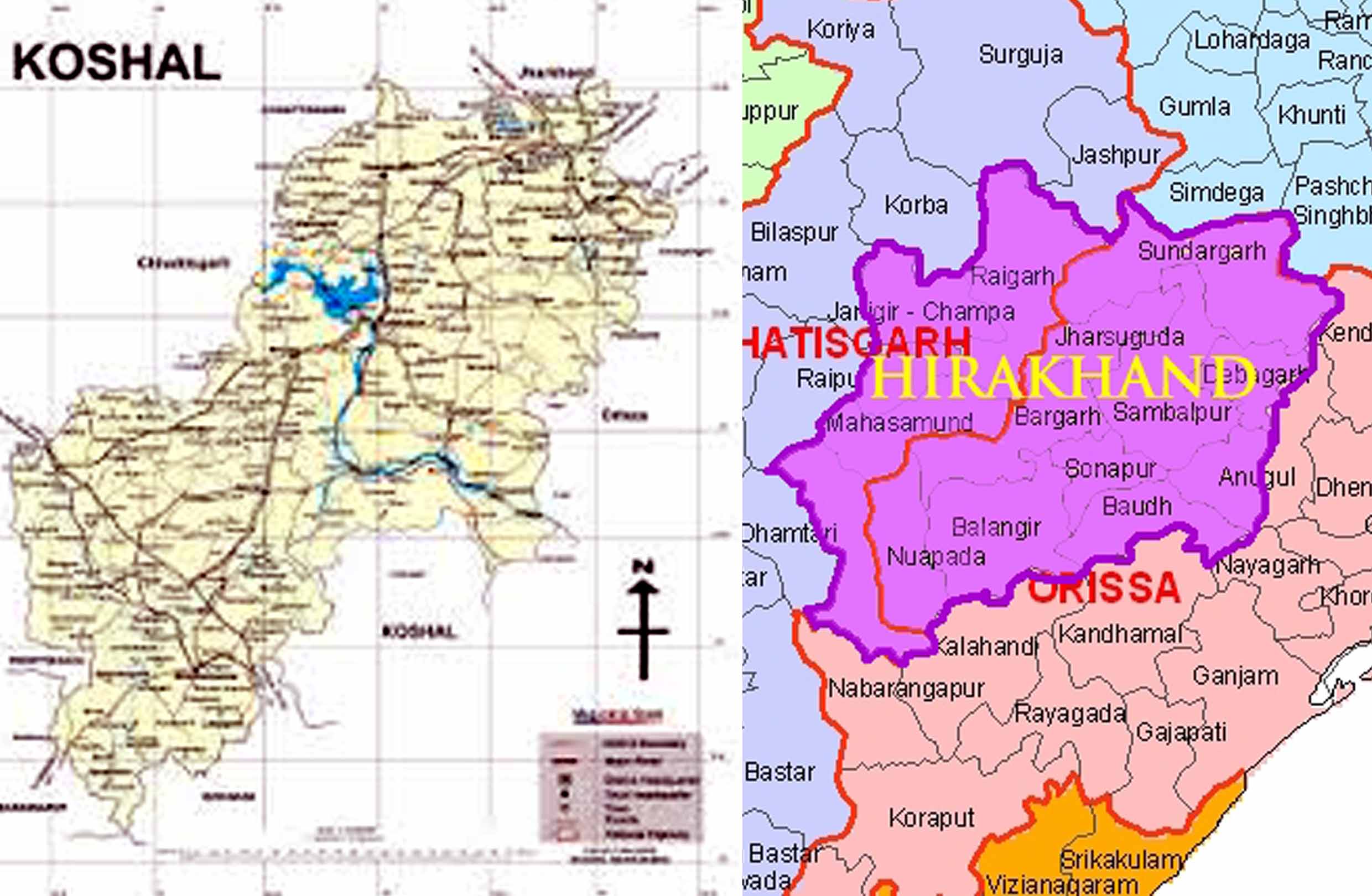Recently a tug of war surfaced in western part of Odisha. The struggle is for identifying the land and naming the language of the region. It is an identity issue backed by political parties.
The present western part of Odisha, comprising ten and half districts has a homogeneous culture; Shakta cult. Worshiping mother is prevailing since time immoral in this part. Maa Samaleswari, Maa Patneswari, Maa Sureswari, Maa Manikeswari, Maa Kosaleswari etc are prominent deities worshiped in this part.
This contiguous geographical area was gifted with deep jungles and affluent with adivasi. And still today Sundergarh and Kalahandi regions are affluent with Adivasis. Visit history and sacred text, you will find Kosal, Kalinga, Oddra, Utkal mentioned in Ramayan , Mahabharat, Bayu Puran etc. If you donot believe purana as a reference to our ancient history, no issue. Just turn the pages of travelogue of Hiuen Tsang. You will found mention of Kosal state with capital at Mayaguha or Maraguda; a submerged civilization in present Nuapada district. Hiuen Tsang belongs to 6th century.
The boundary of a state changed from time to time like an amoeba; and so the capitals. Maraguda (Nuapada), Sirpur (Chattisgarh), and Patnagarh (Balangir district) were capitals of Kosal. And this region was ruled by Nala, Naga, Sarabhapuriya, Chola, Ganga, Somavansi, Kalachuri, Chouhan, Maratha, and Britishers. The Somavansi used to known as Sakala Kosaladhipati (the king of Kosal), Chouhans Kings used to known as Kosaleswar (the God/King of Kosal). Two historical poems, Kosalananda Mahakavyam (Sanskrit) written by Pt Gangadhar Mishra in 16th century and Jaya Chandrika by Prahllad Dubey also uses these terms in their poetries. In Kapil Samhita also Narsinghnath (district Bargarh) has been mentioned as the holy place of Kosal along with Puri, Konark and Bhubaneswar of Utkal. Babu Rewaram Kayasth, the 18th century author, in his Vikram Vilash has mentioned Narsinghnath (district Bargarh) as the holy place of Kosal. In later period, historian Ramchandra Mallick and Purnachandra Rath have also written the history of this region as history of Kosal.
There are so many things named after Kosal; Kosali Danga (boat), Kosala Gour (Jadav Caste), Kosala Maali (a caste engaged in cultivating vegetables), Kosala bhaaji, Kosaleswar Mahadev, Kosaleswari devi, Kosali bahman (Brahmin), and the temple architecture found in this region is also known as Kosali temple architect. These names were not given in a day or a single person. Kosal is not a new term. Up to 18th century Kosal term was signifying the present western Odisha.
The prominence of Hirakhand region upsurge when the Chouhans divided their state for better administrations purpose and campaign at Sambalpur and Sonepur. Sambalpur/ Hirakhand state was established by Balaram Dev, the younger brother of the Kosal King having capital at Patnagarh (Balangir). At a time, even Patnagarh was under Hirakhand when the ruler of Patnagarh was weak. This is part and parcel of administration and politics. This shift of administration and division of land was described as the result of quarrel between the brothers in folklores in a different colour. But the mark of this historical division is so deep in the sentiments of the locals and prominent pages of history that it is not fading away.
However, Balram Dev took the local adivasis into his confidence. He adopted their Goddes Samlei and Sankritize that into Samaleswari. He distributed lands/villages to Brahmins and ruled Sambalpur. Sambalpur evolved as the most prominent city of this region. And an identity also grew up with it. In 19th century, Sambalpuri identity slowly took over the Kosali identity. But the Balangir, Khadial region were still related them with Kosal/Kosali.
Before the Chouhans, adivasis were affluent in both Patnagarh and Sambalpur region. Binjhal, Soura and Gond were major castes then. Slowly many other castes migrated to this region; it becomes the habitats of Brahmins, Kuilta, Bhulia, Aghria etc. All have brought their own culture and language and amalgamated it into the language of the present western part of Odisha.
Further, the Kosali speaking region was ruled by Nala, Naga, Sarabhapuriya, Chola, Ganga, Somavansi, Kalachuri, Chouhan, Maratha, and Britishers. Even after the acquisition by Britishers, this region like a football has been once in Bengal, once in Madhya Paradesh (Central Province) again with Bengal and then Bihar and finally settled with Odisha. And in the course of time the present form of Kosali may have evolved with an influence of all these transition. The degree of influence might be varying for each factor; insignificant to significant.
The Binjhals caste was having their own language but they don’t have it today. They unused, forgotten and it is dead now. They have lost their carrier of their identity.
The Odia/Utkaliya Brahmins have tussle with Jhadua/Aranyaka Brahmins since then. The Odia Brahmins migrated to Sambalpur region due to political instability in the eastern/coastal part of present Odisha. They settled at Sambalpur and hijacked the profession of the native Aranyaka barhmins then. At present both groups are engaged in different professions. Sambalpur town and its peripheral politics are also impacted by Brahmins leaders. The old tussle of both groups still reflected in many platforms; may it be politics or culture. It surfaces from time to time.
Apart from this, the present BJD government is more sympathetic to Odia than Kosali; whereas the local unit of BJP is with the sentiment of the people and supports Kosal and Kosali.
The homogeneous identity of the people of ten contiguous districts is assaulted from time to time for political reasons. This refers to the division of the Chouhans, tussle of Jhadua-Udia and presently BJP vs BJD.
Saket Sreebhushan Sahu
saket.sahu@gmail.com



